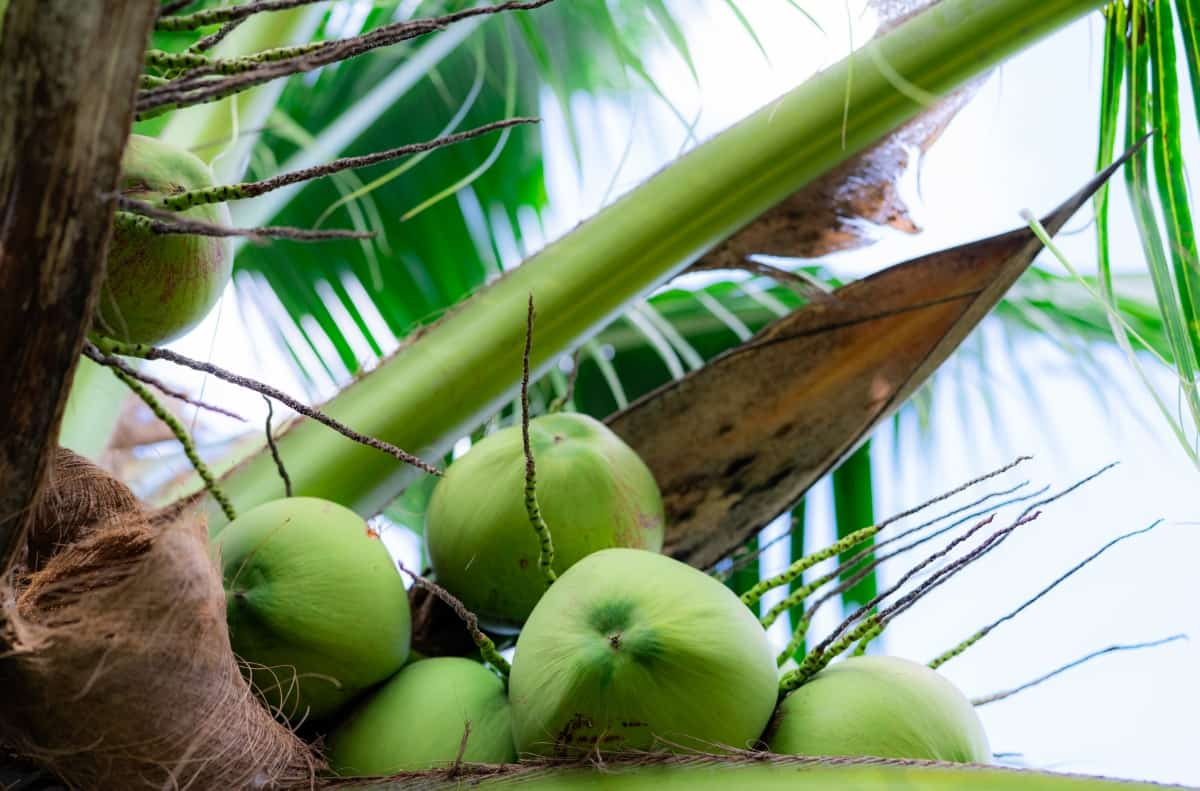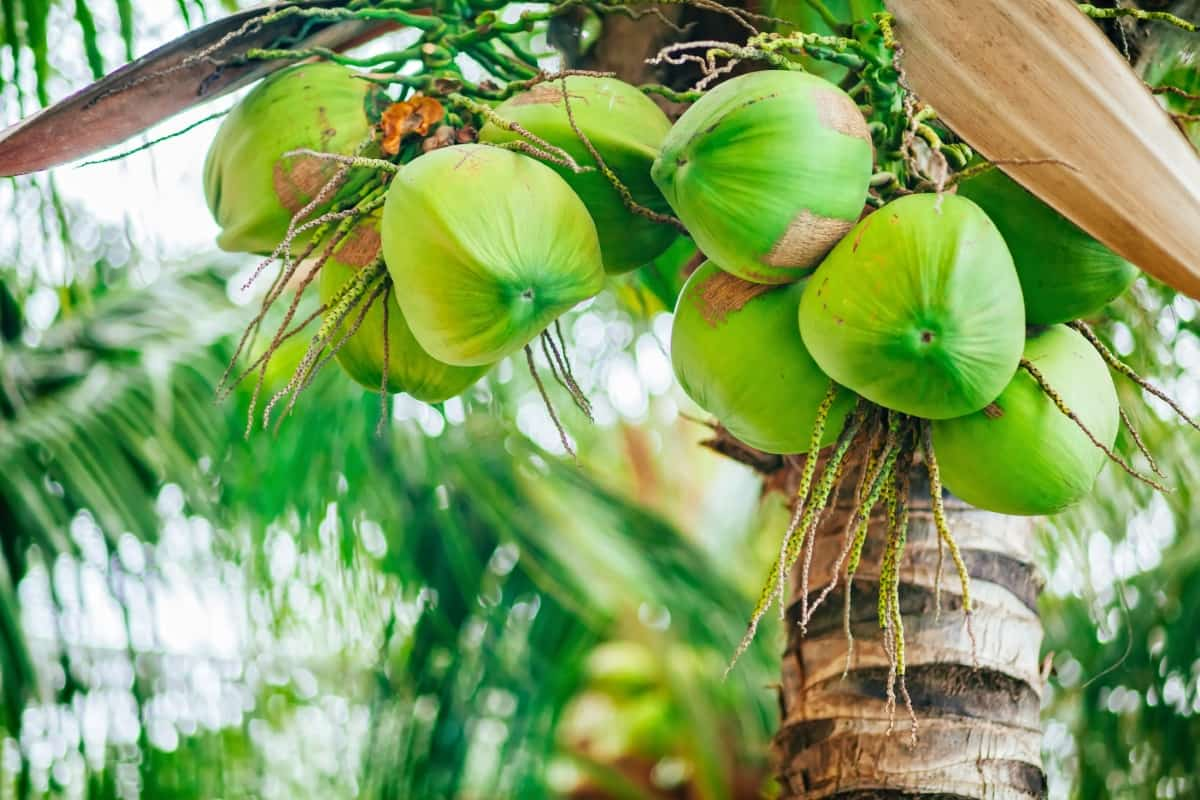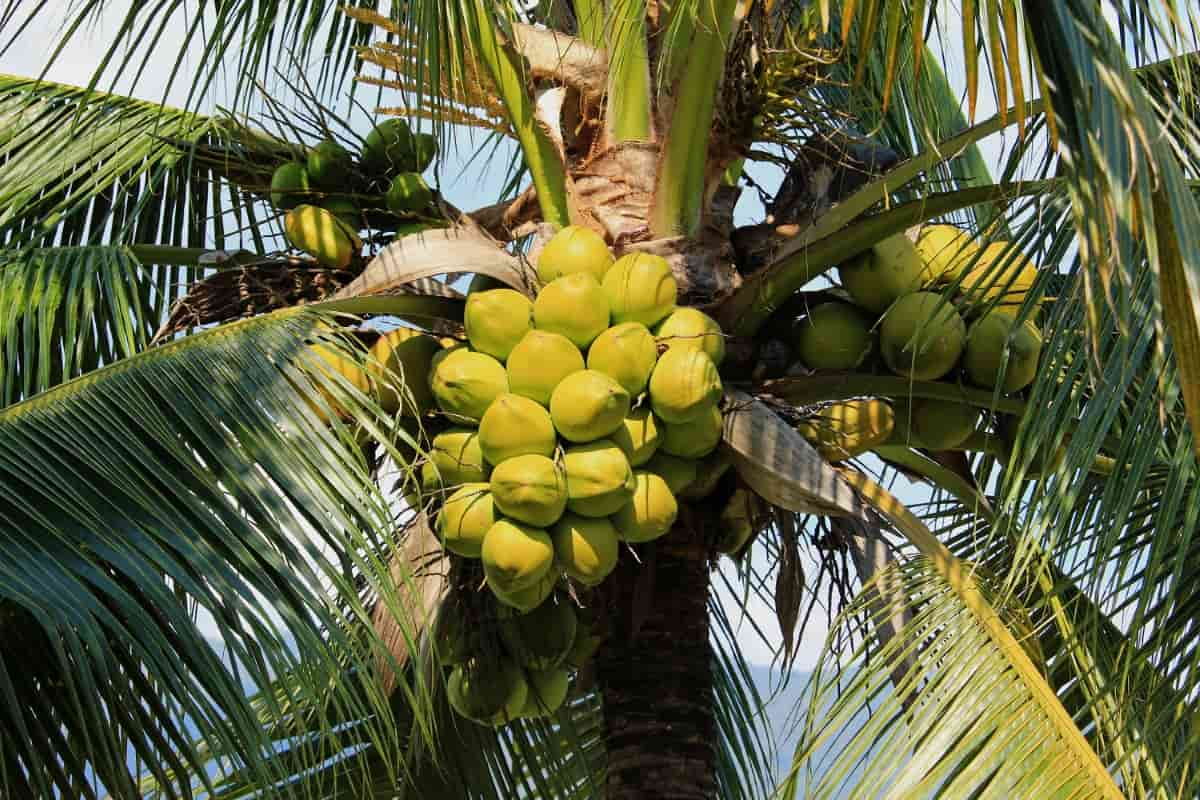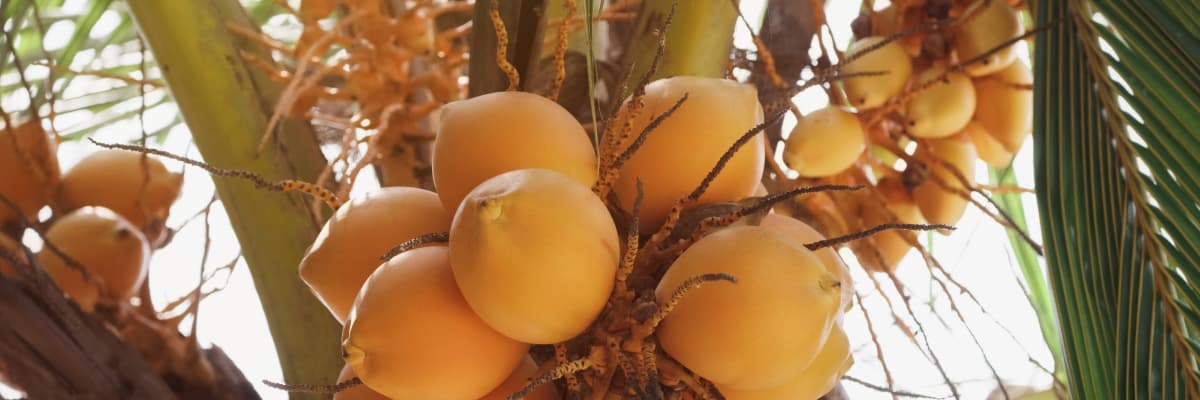Dwarf coconut farming has gained significant attention due to its numerous benefits, including early maturity, higher yield, and ease of cultivation. Dwarf coconut seedlings are particularly sought after for their adaptability and smaller stature, making them suitable for a range of agricultural settings.

This type of farming not only provides a sustainable income source for farmers but also contributes to agricultural diversity and ecological balance. Here, we learn the essential aspects of dwarf coconut farming, from climate and soil requirements to harvesting and post-harvest management, offering a comprehensive guide for those interested in this lucrative agricultural venture.
Dwarf Coconut Farming
Climate and Soil Requirements for Dwarf Coconut Farming
Dwarf coconut farming thrives in tropical climates where there is abundant sunlight and warmth. The optimal conditions for cultivating dwarf coconuts involve temperatures ranging from 20°C to 30°C, coupled with elevated humidity levels. These trees are not frost-tolerant and need a consistent climate without extreme variations. When it comes to soil, dwarf coconuts prefer well-drained, sandy loam soils with a good mix of organic matter. Maintaining a soil pH between 5.5 and 7 is essential for promoting optimal growth in dwarf coconut trees.
Varieties of Dwarf Coconuts
There are several varieties of dwarf coconuts, each with its unique characteristics and advantages. Popular varieties include the Malayan Dwarf, which is known for its resistance to certain diseases and its variety of colors (green, yellow, and orange). Another notable variety is the Cameroon Red Dwarf, famous for its high oil content and sweet water.
The Fiji Dwarf is another sought-after variety, appreciated for its robust nature and resistance to cyclones. Each variety has specific traits like the size of the fruit, taste of the coconut water, and oil content, making them suitable for different purposes and markets.
Planting and Propagation Techniques
Planting and propagation of dwarf coconut seedlings require careful planning and execution. Seedlings should be planted in holes that are about 2 feet in depth and width, ensuring enough space for root development. The best time for planting is at the onset of the rainy season, as the moisture helps in early root establishment. It’s important to maintain a planting distance of 20 to 25 feet between trees to provide ample space for growth. Proper care during the initial stages, including regular watering and protection from pests, is crucial for the healthy growth of dwarf coconuts.
Best Fertilizers in Dwarf Coconut Farming
Organic fertilizers like compost and farmyard manure enhance soil fertility and structure. Additionally, chemical fertilizers rich in potassium, nitrogen, and phosphorus, which are essential for healthy tree growth, can be employed. It’s important to apply fertilizers in the right quantity and at the appropriate times, usually during the onset of the rainy season and before the dry season, to maximize their effectiveness and ensure the health of the dwarf coconut trees.
In case you missed it: How to Install Drip Irrigation in Coconut Plantation: Layout, Design, and Cost Per Acre

Best Irrigation Practices for Dwarf Coconut Farming
Irrigation is critical in dwarf coconut farming, especially in areas with irregular rainfall. The trees require consistent moisture, particularly during the dry season, for optimum growth and fruit production. Drip irrigation is strongly recommended due to its water conservation benefits and precise delivery of moisture to the root zone. It’s important to avoid over-irrigation, as this can lead to root rot and other diseases. During the rainy season, natural rainfall might suffice, but during dry periods, regular watering is essential to maintain the health of the dwarf coconut trees.
Pest and Disease Management in Dwarf Coconuts
Typical pests include mites, beetles, and weevils, while fungal infections like leaf rot and root wilt can also present significant challenges. Integrated pest management, involving the use of biological controls, cultural practices, and chemical treatments, is effective in managing these challenges. Frequent surveillance and timely identification of pests and diseases are essential for effective control. Sanitation practices, like removing fallen leaves and fruits, can also help in reducing the incidence of pests and diseases.
In case you missed it: How to Make Coconut Shell Charcoal for Plants: DIY at Home

Pruning and Training Techniques for Dwarf Coconuts
Pruning and training are important practices in dwarf coconut farming, helping to maintain the health and productivity of the trees. Pruning involves removing dead or diseased leaves, as well as old fronds, to improve air circulation and reduce disease incidence. Training young trees is essential to shape their growth and ensure they develop a strong structure.
It is crucial to conduct these procedures with precision to prevent harm to the trees, as this can increase their vulnerability to diseases and pests. Regular pruning and training help in maximizing the yield and longevity of the dwarf coconut trees.
Harvesting and Post-Harvest Management for Dwarf Coconuts
Harvesting in dwarf coconut farming typically begins when the trees are about 3 to 4 years old, with the frequency of harvesting depending on the variety and purpose of the coconuts. Coconuts for water are usually harvested earlier, while those for copra or oil are left on the tree longer.
In case you missed it: 9 Causes of Dying Coconut Trees and How to Fix Them?

Proper techniques must be used during harvesting to avoid damage to the trees and fruits. This includes proper storage conditions to prevent spoilage and damage. Processing methods, such as drying for copra or extracting oil, should be done efficiently to maximize the quality and value of the produce.
Conclusion
Dwarf coconut farming presents a promising opportunity for farmers and investors alike, offering a sustainable and profitable agricultural venture. With its early maturity, higher yield, and numerous benefits, dwarf coconut farming caters to a growing demand in various markets. By understanding and implementing the right practices in climate adaptation, soil management, selection of varieties, planting techniques, fertilization, irrigation, and pest and disease management, farmers can significantly enhance the productivity and quality of their dwarf coconut crops. Pruning and training techniques further ensure the healthy growth of these trees.
- Feed Your Flock for Less: Top 10 Tips to Save on Chicken Feed
- Ultimate Guide to Ossabaw Island Hog: Breeding, Raising, Diet, and Care
- Hatching Answers: The Top 10 Reasons Your Chickens Aren’t Laying Eggs
- Eggs and Economics: Breaking Down the Cost of Raising Backyard Chickens
- Defend Your Greens: Proven Methods to Keep Iguanas Out of Your Garden
- Ultimate Guide to Cinnamon Queen Chicken: A Comprehensive Guide for Beginners
- Ultimate Guide to California Tan Chicken: Breeding, Raising, Diet, Egg-Production and Care
- Ultimate Guide to Marsh Daisy Chicken: Breeding, Raising, Diet, and Care
- 10 Types of Chicken Farming Businesses You Can Start for Profits